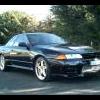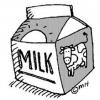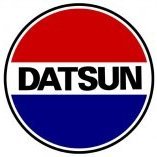Rb26 Gt-rs Dyno Result
Announcements
-
Similar Content
-
Latest Posts
-
Hey, it's me! Though honestly, if I had 20M in my bank account tomorrow, I would not want to be rid of my car all of the sudden - Which makes me think this is money stuff, not "I actually hate car" stuff. I'd probably double down and buy even more trinkets and fun things for it. If this is not you, then sell it cheaper. It will sell at a certain price after all.
-
Of course it would be - But you shouldn't be here.
-
This is the LCA mount reloctaion kit. Self explanatory in its description. https://au.gktech.com/products/s13-180sx-r32-subframe-anti-squat-reduction-weld-in-kit?_pos=62&_fid=1e812d392&_ss=c These are the alloy subframe bush inserts that I am using. I like them. https://au.gktech.com/products/rear-subframe-slip-in-collars?_pos=29&_fid=1e812d392&_ss=c Alternatively, if you have original and shitty bushes, you might consider outright replacement with poly. https://au.gktech.com/products/polyurethane-rear-subframe-bushes?_pos=28&_fid=1e812d392&_ss=c I would also higly recommend that you look into adjustable RUCAs and tension rods, so you can sort out the camber and bump steer behaviour, especially if the car will be any more than ~15mm lower than stock. I would also highly recommend the GKTech FUCAs, although you really should do some research and learning on the subjetc of R32 FUCAs before making any decisions. All of this will be criticaly difficult to get through a TÜV inspection too, if that happens to be relevant to you. Note that if you do install the relocation kit, you will absolutely have to replace the associated bushes with spherical joints (you can read all about that on the product page) or upgrade the LCAs also.
-
By TurboTapin · Posted
I picked up my block and head last week and have been slowly assembling it since then. Pictures I took earlier this week. The rest of the auxiliaries are on now. I just have my intake manifold runners to tap for my WMI direct port setup before putting it back on. I should hopefully have the motor back in by this weekend.
-








Recommended Posts
Create an account or sign in to comment
You need to be a member in order to leave a comment
Create an account
Sign up for a new account in our community. It's easy!
Register a new accountSign in
Already have an account? Sign in here.
Sign In Now